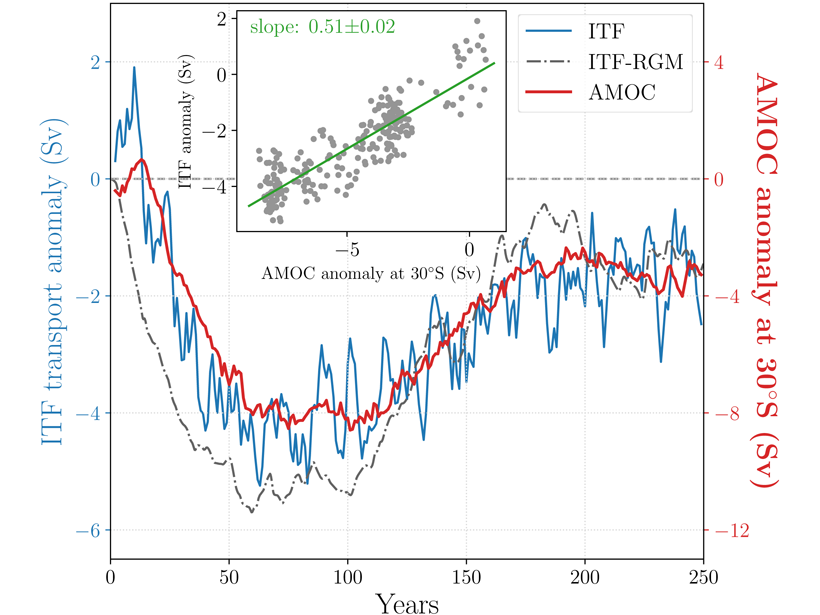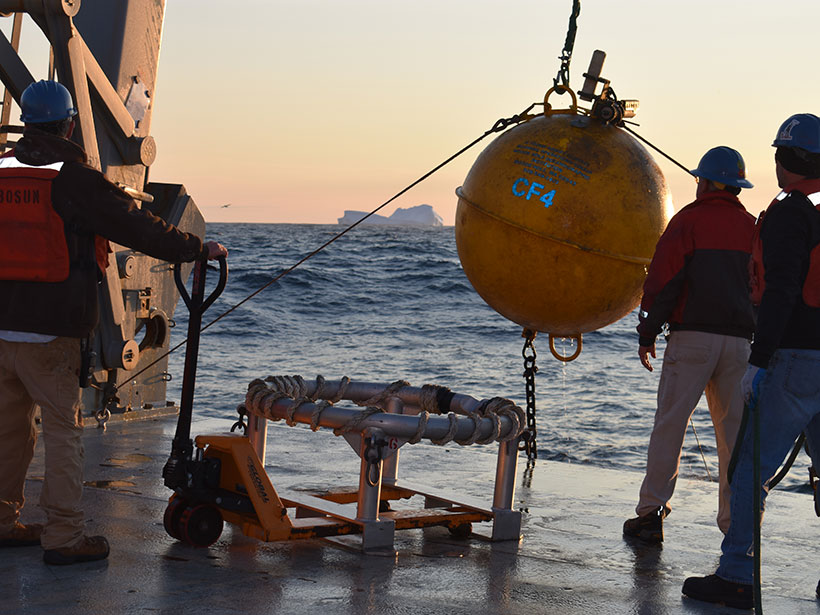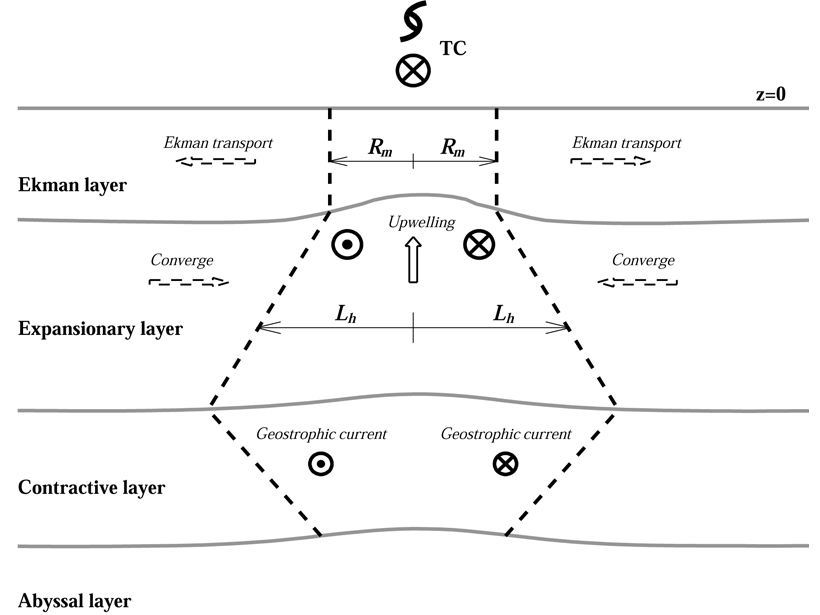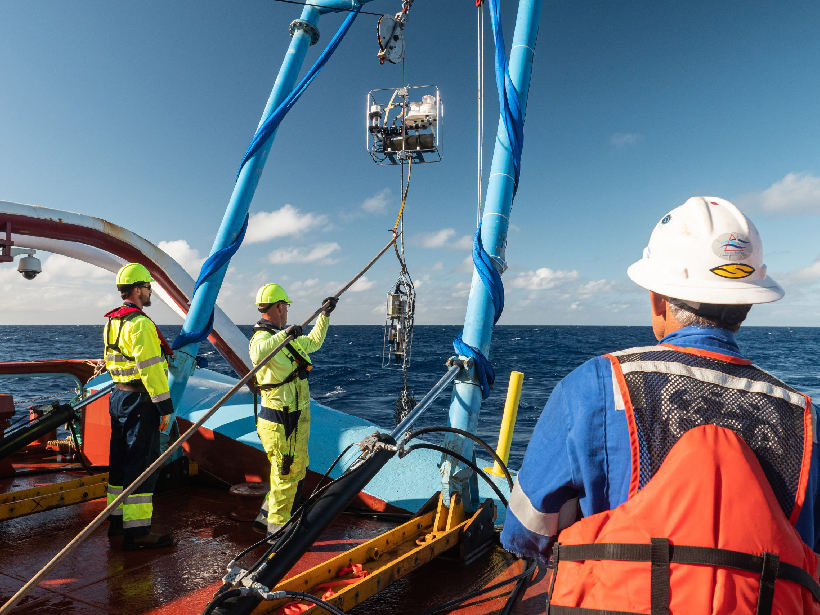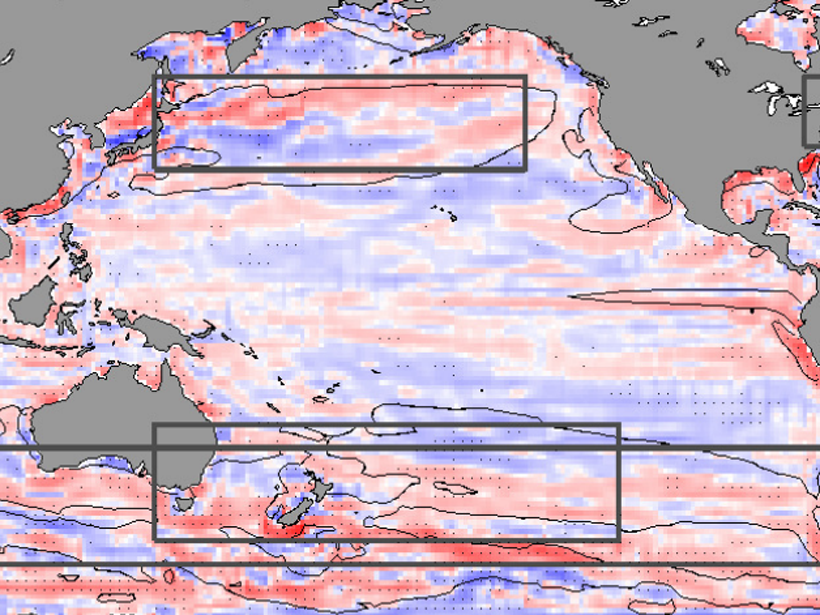Investigadores utilizaron un tanque de olas para estudiar el movimiento de partículas de plástico de forma experimental y comprender el papel de la densidad de partículas en el comportamiento de deriva.
currents
Overturning in the Pacific May Have Enabled a “Standstill” in Beringia
During the last glacial period, a vanished ocean current may have made the land bridge between Asia and the Americas into a place where humans could wait out the ice.
What Causes Centennial Changes in the Indonesian Throughflow?
Transient long-term changes in the strength of the Indonesian Throughflow are unexpectedly linked to circulation changes in the remote high-latitude North Atlantic.
Tracking How Plastic Moves in the Coastal Ocean
Researchers used a wave tank to study the movement of plastic particles experimentally and to understand the role of particle density in drift behavior.
Improving Proxy Representations of Ocean Properties
Many oceanic properties are not directly observed but are instead estimated using proxy measurements. A new method uses physics-based correlations to reduce uncertainty in this relationship.
A Direct Bridge Between Tropical Cyclones and Ocean Eddies
Tropical cyclones can inject potential vorticity directly into ocean eddies—an alternative way for tropical cyclones to leave fingerprints on the ocean besides the traditional near-inertial wave.
Below the Great Pacific Garbage Patch: More Garbage
New research is finding there’s more to marine debris than just what appears near the ocean surface, including tons of microplastics extending hundreds of meters into the deep.
El Cambio Climático Está Intensificando las Corrientes Oceánicas del Ártico
El derretimiento del hielo significa que los fuertes vientos del Ártico están creando corrientes más energéticas en el giro de Beaufort.
Ocean Gyres Observed to Move Poleward
Basin-wide ocean gyres have been observed to be slowly migrating toward the poles and, although natural variations contribute, climate simulations suggest the shift is in response to global warming.
Different El Niño, Different Paths of North Equatorial Current
Different types of El Niño have different impacts on the North Equatorial Current Bifurcation and can be extended to ocean circulations in the Pacific and the global climate system.



